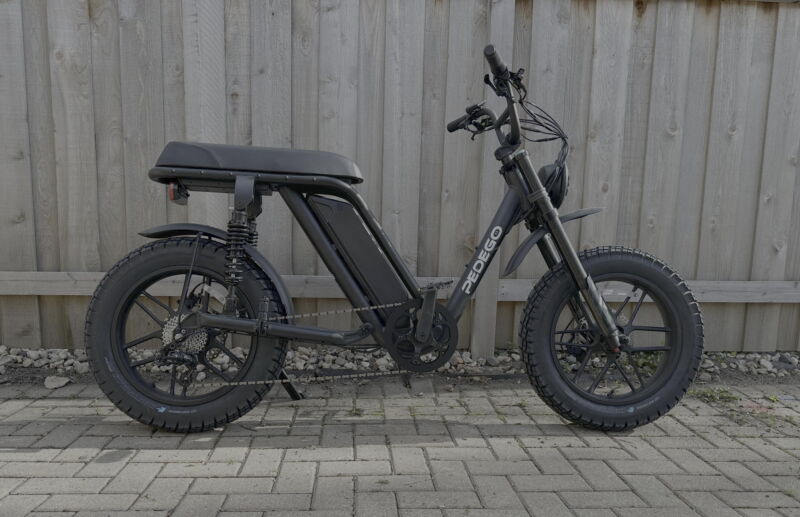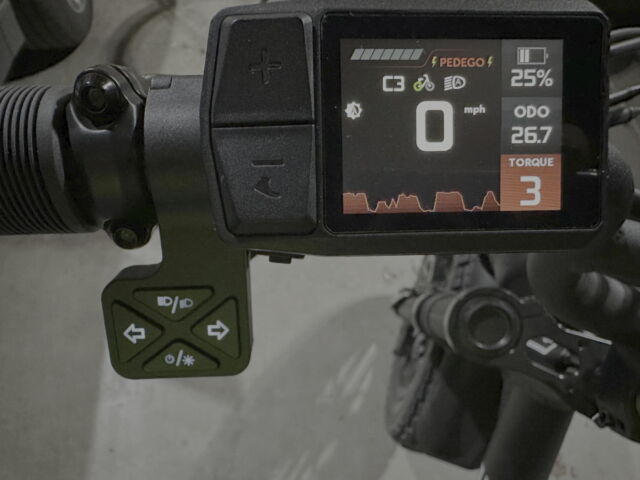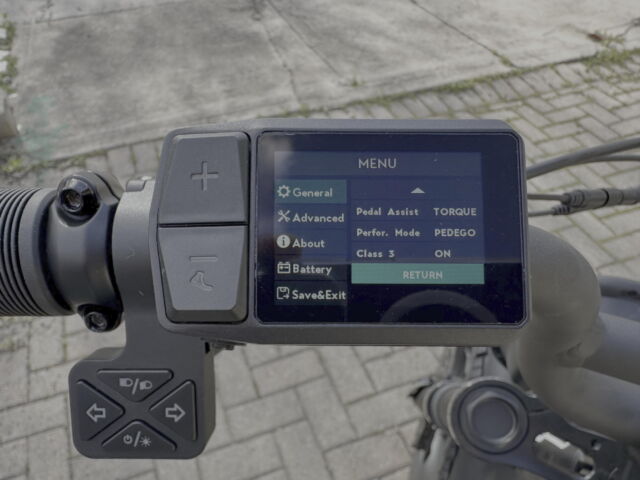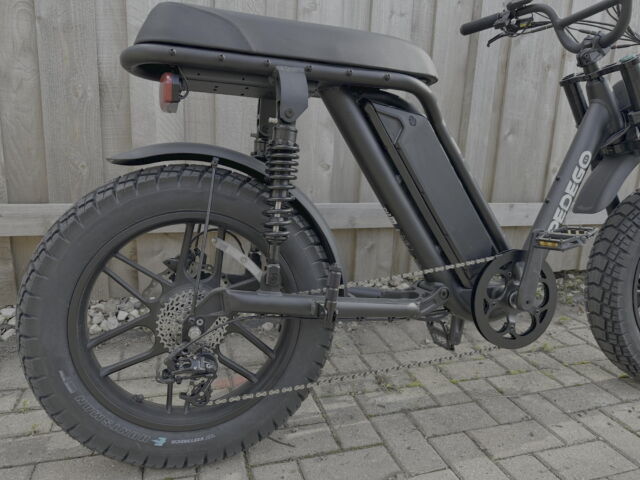
Eric Bangeman
I’m not a fat-tire bike guy. My tire tastes run toward the thinner end of the spectrum: 28s on my road bike and 35s on my gravel bike. And I must confess to some distaste for fat-tire e-bikes, which I mostly encounter being ridden (and occasionally even pedaled) on local bike trails. But the $3,995 Pedego Moto caught my eye. The specs were impressive, but more importantly, it looked like it would be a blast to ride.
Unlike most of the other e-bikes I’ve reviewed, the Pedego Moto requires little in the way of assembly. The Moto arrived in a massive box strapped to a pallet, but once the box was cut away and the bike exposed, all I had to do was adjust the handlebars with a hex key and the Moto was good to go.
From the headlight to the bench seat, Moto sports a rugged moped vibe. There’s a bright color display attached to the handlebars with four control buttons. The two on the front tweak the assist level and navigate setup screens, while the ones on the top and bottom handle power and confirming setup options. There’s another controller just below and to the left of the display that handles the turn signals and headlights.
There’s no app for the Moto; set-up and adjustments are done entirely via the display.

Eric Bangeman

Eric Bangeman
The Moto is powered via a 750 W motor with up to 75 miles of range paired with a 48 V battery. The 75-mile range sounds reasonable if the lowest level of assist is selected. I rode the Moto mostly at the highest assist level, and after 23 miles of riding, the battery was about 25 percent charged. What really surprised me about the Moto was the groupset. Instead of the typical seven-speed Shimano hardware, the Moto has a 10-speed SRAM GX groupset sporting a 10-32 cassette paired with a 52T front chainring.

Eric Bangeman
Out of the box, the Moto is a Class 2 e-bike, with a top speed of 20 mph. A trip to the settings screen is all that’s needed to bump it to Class 3 and a max of 28 mph under assist. The right handlebar grip has a motorcycle-style throttle for quick starts off the line or if the rider doesn’t feel like pedaling.
The combo of motor and groupset makes riding the Moto very satisfying. In contrast to some e-bikes, where I would feel an uncertain relationship between my gear, cadence, and speed, I felt like I was working in concert with the Moto. The best example of this is going from a full stop to top speed with assist level 3. I’d start out in a low gear, and each time I’d shift, the bike would speed up 1-2 mph as well, but it felt organic—the Moto and I were cooperating. By the time I’d reach the highest gear, the Moto would be near 28 mph, and that 5.2:1 gear ratio made for very satisfying pedaling. Without any assist at all, I struggled to top 13 mph on the Moto.




















+ There are no comments
Add yours